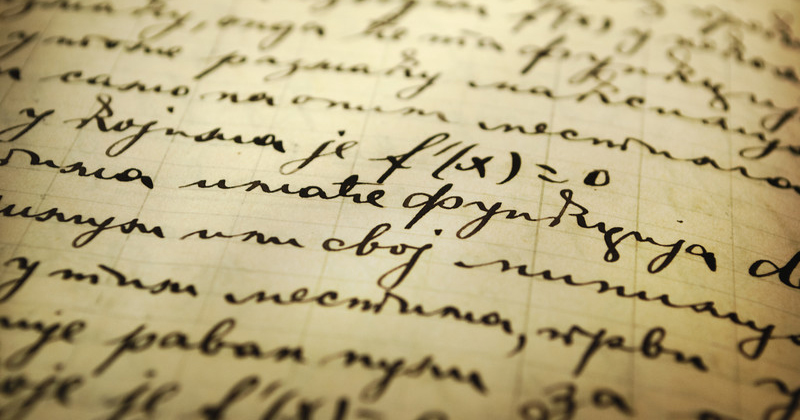Rare books and manuscripts are valuable assets. It is essential to preserve them against damage resulting from misuse, poor climatic conditions, pests, or other destructive agents, for the use of the future generation. One of the best ways to protect rare books and manuscripts from damage is to convert them into digital format. Partnering with a reliable document scanning company helps scan and convert rare or fragile books and manuscripts into electronic format.

Recent research on United States collections by a group of archivists and climate scientists found that centuries of written history are at risk of being damaged by climate change. The history in the form of codices, printed books, manuscripts and other material artifacts are stored in costly and well-ventilated university collections or sometimes tucked in crumpling cardboard boxes under the desks of local librarians or otherwise sits crammed in the storage cupboards of city governments. Scholars from around the world may be interested in some of these documents. Nearly all are at risk of degradation caused by projected temperature changes, humidity, sea level rise, storm surges and precipitation. Many of them cannot be replaced if they are lost or damaged. Yet, archivists have sometimes been slow to take any action against the posed risks. The consequences of inaction could be extensive damage to national archival infrastructure and degradation and loss of the precious cultural heritage materials contained within them.
The archivists are aware of the possibility of disasters and their role in disaster recovery, but no one is really thinking ahead to future climate scenarios. Similarly, little had been done to adapt U.S. repositories. This negligence can make them vulnerable to unnecessary risk. The director of the Health Sciences Library at New York University, Jeff Williams was forced to consider climate change the hard way in 2012, when Hurricane Sandy slammed into the city, flooding the cellar level of the library, where a cabinet of oversized archival documents were kept, alongside computers and staff office space. The staff did take sensible precautions before the storm hit that included moving computers from the floor onto desks and placing plastic over collections. However, a 14-foot storm surge ended up leaving the entire basement underwater for several days. Even some of the holdings, including some 20th-century black-and-white photographs plus archived awards and ceremonial certificates made from vellum were damaged beyond repair, yet conservators managed to restore other items in the collection.
Tara Mazurczyk, a graduate student at Pennsylvania State University, who led the new research into climate change and its effects on archives, says that, “While the threats that climate change poses to material history are well-known and frequently studied, researchers have tended to focus on immovable assets, including archaeological monuments, buildings and UNESCO World Heritage sites. Archives, because they are technically mobile, have received less attention”. Relocating buildings full of old and fragile documents may be very expensive and difficult to undertake. The destruction of an archive not only means the loss of cultural traditions and future scholarship, but it can also herald legal difficulties.
For the purpose of the study, the researchers plotted the locations of 1,232 archives in the U.S. that were listed in publicly available data and then mapped them against climate-related data sets from the Federal Emergency Management Agency, the National Oceanic and Atmospheric Administration, and the National Weather Service. This cross-referencing revealed that 99 percent of archives across the U.S. are at danger from climate change. 2.4 percent are susceptible to surface water flooding and at the same time 17.7 percent are at risk of the combined effects of sea level rise and storm surge. The biggest threat was the increased variance in humidity and temperatures with 90 percent of archives expected to experience a swing of at least 1 degree Celsius and 7.5 percent projected to face a variation of 10 degrees Celsius or more, under a high-emissions scenario. The most important thing you have to do to keep rare archival material from growing mildew or falling apart is to maintain a constant temperature and humidity.
A records manager at the Archives and Rare Books Library of the University of Cincinnati, EiraTansey says that, “We know there are going to be a lot more disasters in the future, so how do we protect our collections in light of that knowledge?”. There are safety measures that archivists can take to protect their collections, including identifying opportunities to relocate temporarily in the event of a disaster or renovate storage facilities in light of local risks. Besides, many libraries and archives are digitizing their collections, this ensures that anything destroyed by climate change continues to exist in pixels, if not on vellum and parchment and paper. Other benefits of converting rare books and manuscripts into digital format include:
- Conserve and preserve the knowledge
- Reduce space problem
- Easily disseminate the information to the users
- Provide easy mobility to the user
- Facilitate remote access
- Save maintenance costs
- Save the time of the user
- Increase the accessibility
- Facilitate the reproduction of the rare documents
Document scanning companies can help institutions digitize the rare or fragile documents and store them in the required format.



